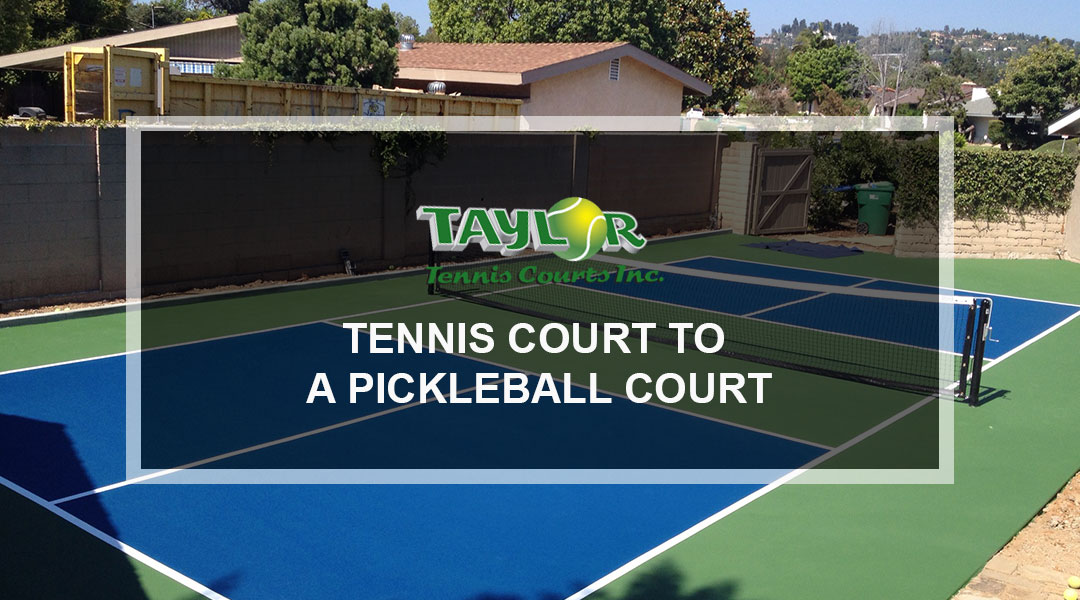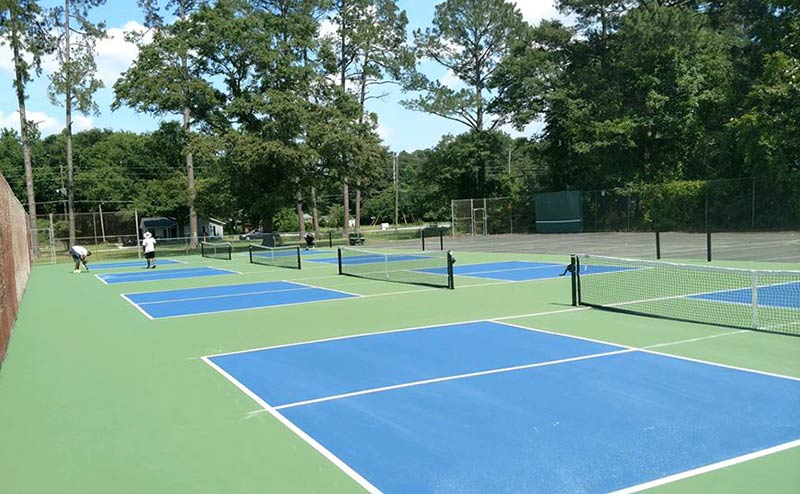Expert Pickleball Court Construction-- From Design to Setup
Expert Pickleball Court Construction-- From Design to Setup
Blog Article
Lasting Practices in Pickleball Court Construction You Ought To Know
As the popularity of pickleball continues to climb, so too does the requirement for lasting methods in court building. This method not just addresses environmental concerns however likewise enhances the longevity and performance of the courts. From choosing environmentally friendly products to applying efficient drainage and energy-saving lighting solutions, there are numerous approaches to take into consideration. Yet, the impact of these techniques extends much beyond the court itself. Comprehending just how each aspect adds to an extra lasting future welcomes better exploration into the detailed balance between leisure growth and ecological stewardship.
Choosing Eco-Friendly Materials
Selecting green products is an essential action in the construction of lasting pickleball courts. The selection of lasting materials not just decreases ecological impact but additionally enhances the long life and efficiency of the court. Secret materials include reused rubber for the surface area, which supplies exceptional durability and shock absorption while drawing away waste from land fills.
Additionally, utilizing in your area sourced products reduces transportation emissions and sustains local economies. Pickleball court construction. Making use of native hardwoods for fencing and seats can provide a lasting aesthetic while guaranteeing resilience against the aspects.
Incorporating permeable products for court foundations can further add to sustainability by permitting natural water drain and lowering drainage. These options not only secure local ecosystems yet also promote healthier play atmospheres.
Efficient Drain Solutions
While the option of green products is necessary, executing efficient water drainage options is just as crucial for maintaining lasting pickleball courts. Proper drain not only protects the court surface from water damage however additionally decreases disintegration and runoff, promoting environmental honesty.
Efficient drainage systems can consist of permeable paving, which permits water to penetrate the ground rather than pooling on the surface. This lowers the probability of standing water, which can result in mold and mildew and other maintenance issues. In addition, including strategically placed drain networks and swales can route excess water away from the court location, making sure a dry playing surface area and avoiding soil disintegration.
Using native vegetation in the landscape design around the courts can additionally improve drainage by soaking up excess water and decreasing runoff. These plants need much less watering and promote biodiversity, lining up with lasting methods.
Additionally, it is vital to on a regular basis maintain the drain system to ensure its long-lasting effectiveness. This consists of clearing particles and surveillance for obstructions. By focusing on reliable water drainage services, pickleball court erectors can substantially contribute to the sustainability and durability of the center, inevitably benefiting both gamers and the atmosphere.
Energy-Efficient Lighting Options
As the demand for pickleball continues to expand, incorporating energy-efficient lighting choices into court design has ended up being progressively vital for sustainability. Traditional lighting systems usually eat too much power, adding basics to higher operational expenses and environmental influence. Consequently, embracing modern-day, energy-efficient modern technologies is important for both new constructions and renovations.
LED (Light Emitting Diode) illumination sticks out as a premier selection because of its durability and energy financial savings (Pickleball court construction). Compared to traditional lighting, LEDs make use of roughly 75% less energy and can last approximately 25 times longer, considerably reducing upkeep costs. The directional nature of LED illumination decreases light contamination, official website making sure that lighting is concentrated on the court rather than surrounding areas.

Lasting Surface Area Alternatives
Checking out lasting surface options for pickleball courts has obtained traction among players and home builders alike. The focus on environment-friendly products not only lines up with the expanding ecological awareness however also improves the performance and durability of the courts.
One prominent option is using recycled rubber, which can be sourced from used tires. This product provides outstanding shock absorption, lowering the risk of injuries for players while advertising sustainability. Additionally, modular tiles made from recycled plastics offer another practical alternative. These tiles are easy to mount and replace, and their flexibility enables for numerous court setups.
Natural turf courts are additionally becoming a lasting choice, advertising biodiversity and reducing the warm island result. However, they need regular maintenance and water, which may not align with all sustainability objectives.

Water Conservation Strategies

An additional efficient technique involves the installment of rainwater harvesting systems. These systems store and accumulate rainwater for usage in preserving court surface areas and landscaping. This technique not just saves potable water yet likewise reduces dependence on municipal sources.
In addition, utilizing drought-resistant landscape design around the courts is vital. Native plants need much less water and are better adjusted to local climate problems, thus decreasing general water consumption. Furthermore, making use of click to investigate efficient watering systems, such as drip watering, makes sure that water is provided straight to plant origins, reducing dissipation and waste.
Final Thought
Including lasting practices in pickleball court building considerably adds to environmental conservation and source effectiveness. Making use of environment-friendly products, applying reliable drain options, and taking on energy-efficient lights alternatives can substantially lower eco-friendly effect. Exploring lasting surface area alternatives and using water preservation techniques boost the general sustainability of these recreational centers. By prioritizing these practices, the construction of pickleball courts can straighten with wider environmental objectives while promoting long life and performance within communities.
As the appeal of pickleball proceeds to rise, so as well does the demand for sustainable methods in court construction.Selecting eco-friendly products is an important action in the building of lasting pickleball courts. By focusing on energy-efficient illumination options, pickleball court manufacturers can add to a more sustainable future while satisfying the needs of stakeholders and gamers alike.Including sustainable surface choices not just boosts the efficiency of pickleball courts yet additionally leads the means for executing efficient water preservation strategies.Integrating sustainable practices in pickleball court construction considerably adds to ecological preservation and source performance.
Report this page